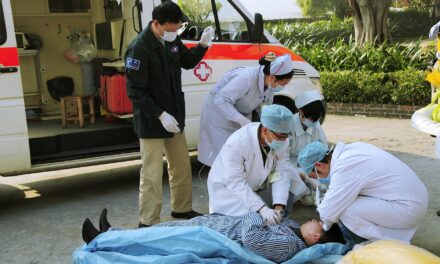In today’s unpredictable world, personal safety has become a paramount concern for many individuals. Tactical training for personal protection is not just for law enforcement or military personnel; it’s increasingly sought after by civilians looking to enhance their ability to protect themselves and their loved ones in any situation. This comprehensive guide delves into the importance of tactical training, outlining the skills and techniques that can help you respond effectively to threats and emergencies.
Tactical training encompasses a wide range of physical and mental techniques aimed at developing situational awareness, strategic thinking, and self-defense capabilities. Whether it’s handling confrontations, managing extreme situations, or simply feeling more secure in your daily life, tactical training provides the tools and knowledge necessary to increase your confidence and preparedness.
The benefits of this training extend beyond mere physical defense. It’s about cultivating a mindset of readiness, learning to assess environments critically, and making rapid, informed decisions. In this guide, we will explore various aspects of tactical training, including the basics of hand-to-hand combat, the strategic use of firearms, the psychological aspects of self-defense, and how to develop a comprehensive personal protection plan.
Join us as we uncover the key elements of tactical training for personal protection, providing you with practical advice and expert insights to empower you to take charge of your safety in any circumstance. Whether you are new to the concept of personal protection or looking to refine your existing skills, this guide aims to equip you with a solid foundation in tactical training techniques that can significantly impact your ability to protect yourself effectively.
Core Components of Tactical Training for Personal Protection
Understanding Situational Awareness
Situational awareness is the cornerstone of effective personal protection. It involves being cognizant of your environment and recognizing potential threats before they become imminent dangers. Training in situational awareness teaches you to observe your surroundings actively, interpret social cues, and anticipate problematic scenarios based on environmental and behavioral indicators.
Hand-to-Hand Combat Skills
Basic self-defense skills are essential in personal protection. Tactical training often includes hand-to-hand combat techniques such as Krav Maga, Brazilian Jiu-Jitsu, or other martial arts that emphasize neutralizing threats quickly and efficiently. These skills are crucial for situations where you might find yourself without a weapon or need to defend against an unarmed assailant.
Firearms Training
For those who choose to carry a firearm for self-defense, professional training is critical. Firearms training courses focus on safe handling, accurate shooting, and the legal aspects of firearm usage for personal protection. This training also covers the psychological and physiological aspects of using a firearm under stress, ensuring that individuals are prepared mentally and physically to handle a weapon responsibly.
De-escalation Techniques
Not every threat requires a physical confrontation. De-escalation techniques are vital components of tactical training, teaching individuals how to calm tense situations verbally and prevent violence. These skills are particularly useful in everyday interactions that could escalate unnecessarily into physical altercations.
Emergency Response and First Aid
Being able to respond to medical emergencies is another critical element of tactical training. Courses often include basic first aid, CPR, and trauma care to ensure that you can provide immediate assistance in a crisis, whether it’s a result of an altercation or an accident.
Legal and Ethical Considerations
Understanding the legal implications of using force in self-defense is an integral part of tactical training. Participants learn about local laws regarding self-defense and the use of weapons, helping them make informed decisions about how to respond to threats without overstepping legal boundaries.
Expert Insights on Effective Tactical Training
Experienced instructors emphasize the importance of a holistic approach to personal protection. They advocate for a balanced training regimen that includes physical fitness, continual skill enhancement, and regular practice of the techniques learned. Furthermore, experts recommend participating in scenario-based training exercises that simulate real-life situations to build confidence and improve decision-making skills under pressure.
Conclusion: Empowering Yourself Through Tactical Training for Personal Protection
Tactical training for personal protection is more than just learning to fight or handle a weapon; it’s about developing a comprehensive safety mindset that encompasses awareness, preparation, and appropriate response to threats. This training empowers individuals with the confidence and skills needed to navigate and react to various scenarios safely and effectively.
Key Takeaways for Embracing Tactical Training:
- Enhanced Awareness: Cultivate situational awareness to detect and avoid potential threats before they escalate.
- Self-Defense Skills: Acquire hand-to-hand combat skills that can disable an attacker and provide crucial seconds needed to escape danger.
- Responsible Weapon Use: If opting for firearm defense, undergo comprehensive training to handle and use your weapon safely and legally.
- De-escalation Mastery: Learn to manage confrontations without violence through effective communication and de-escalation techniques.
- Medical Readiness: Equip yourself with basic first aid and trauma care skills to assist in medical emergencies.
- Legal Knowledge: Understand the legal aspects of self-defense and the use of force to ensure your actions remain within the bounds of the law.
By integrating these elements into your daily life, tactical training for personal protection goes beyond mere physical defense; it becomes a way of life that enhances your overall safety and that of those around you. The confidence gained through this training allows you to face life’s challenges with a greater sense of security and preparedness.








